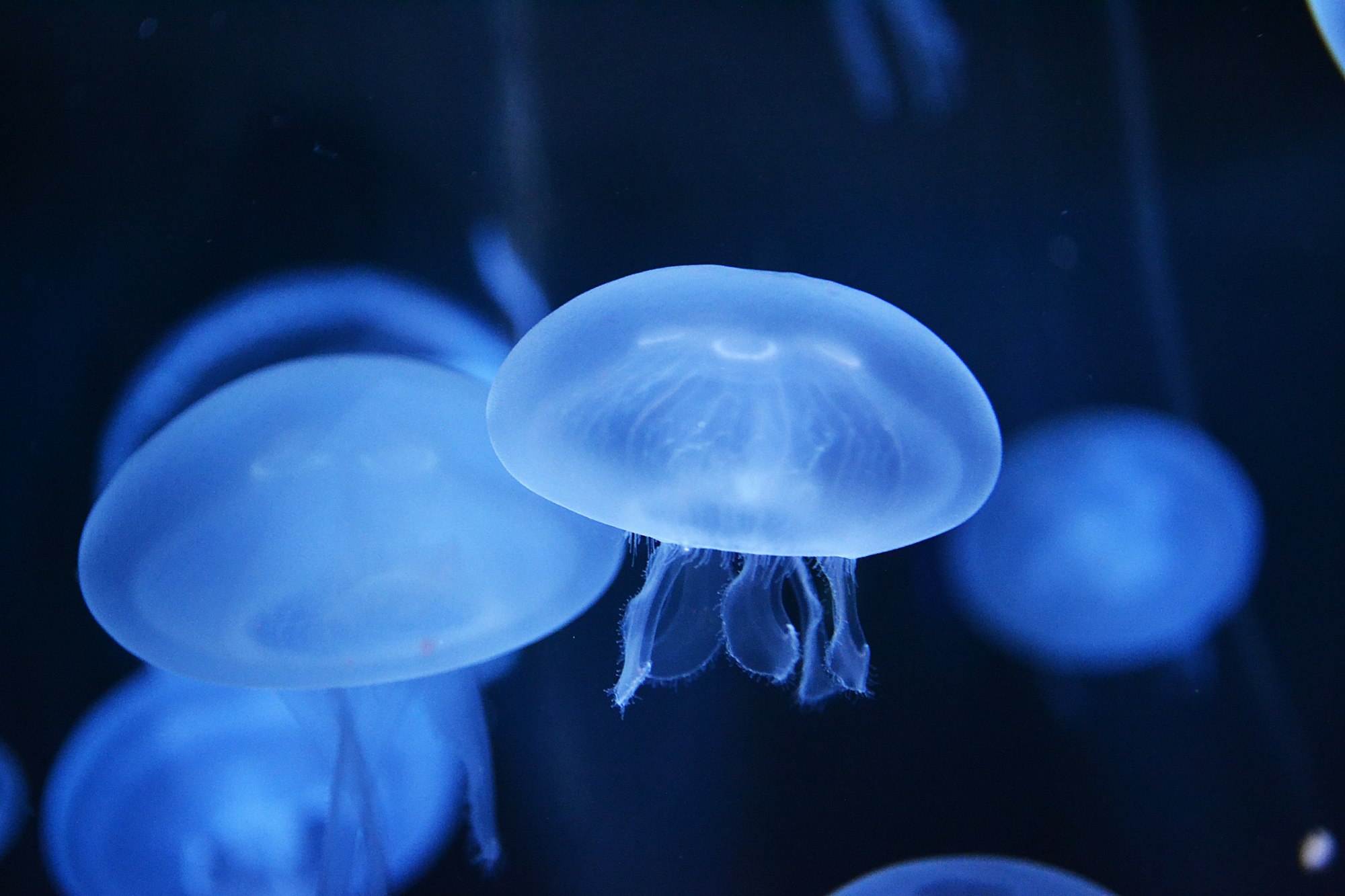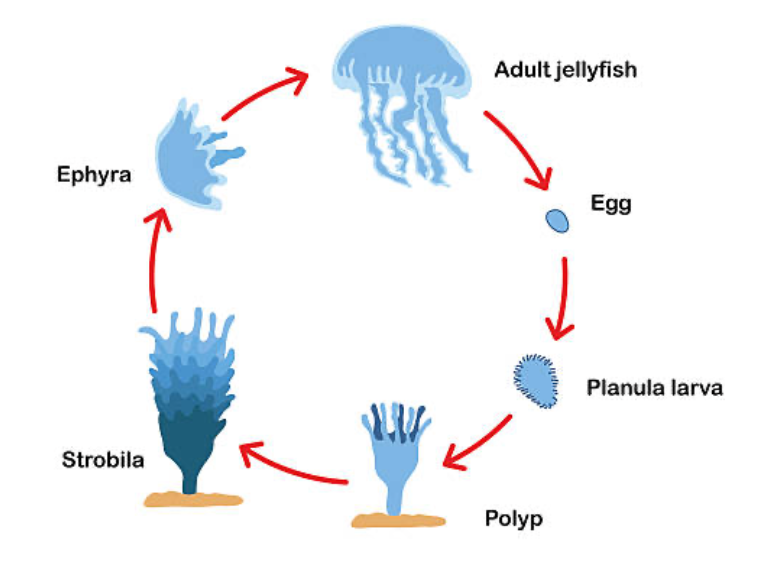The Immortality Of A Jellyfish - Truth Or Exaggeration?

Since the start of human civilisation over five thousand years ago, humanity has been resolute in searching for ways to thwart the grip of death. We see this in the long list of parables and myths and other such apocryphal narratives that have originated around the globe. Many of these will most likely have been told to humour their listeners; for instance, prince Tithonus of Troy from Ancient Greece supposedly gained immortality, but, in exchange, was transformed into a cicada (I always found those stories to be very odd). Others will have seen more esteem throughout the ages, such as the depiction of Gilgamesh's long but mortal reign in Uruk, Mesopotamia, for a healthy lifespan of 126 years. This, I think, is an exaggeration - according to NBC News, the longest-living person verified was a Bolivian man only 123 years old. The age was probably fabricated, but I can see Sumerian King Gilgamesh wanting to live a little longer. I think we all want to.
Nowadays, scientific leaps of progress are being made to achieve this goal, and not only to extend our life - but also to extend our health. This is no surprise to me, as I could believe just about anything is possible with science, but what was surprising was when I found the Turritopsis dohrnii. Known as the 'immortal jellyfish' (I'm not kidding), this species of jellyfish is supposedly considered biologically immortal and decoupled from mortality due to aging. Confusingly, this means that the immortal jellyfish is not literally immortal - a meandering fish or hungry turtle will end one pretty swiftly - but the idea that one of them today may have been alive 500 million years ago (without getting devoured in the meantime) is still intruiging enough to investigate.
To comprehend how this could be possible, it is useful to think about jellyfish as a whole. Taxonomically, jellies are placed in the kingdom Animalia and further categorised into the phylum Cnidaria. These classifications are ways of comparing features between different species and, generally, the more categories that two species share, the more genetically related and similar they are. For example, unlike their fellow animals, most cnidarians have mouths surrounded by tentacles that fire off toxins (via specialised cells called cnidocytes) to capture prey. Jellyfish fit this trend; but so do corals, sea anemones, hydrae and other groups of creatures. In fact, the collection is so distributed that around 10,000 species of cnidarians are fit into only four classes - the Anthozoa, Scyphozoa, Cubozoa, and Hydrozoa. Common characteristics in the phylum include: thin walls for the exchange of nutrients and waste with the surroundings; a watery jelly called mesoglea filling their insides; a gastrovascular cavity that takes the place of the mouth, stomach and anus all at once (which is kind of disgusting); and the weirdest life cycle in animals that I've ever heard of.
The Cnidarian Life Cycle
In general, cnidarians have two body plans in their life. When young, they are known as polyp, which is the sessile state that looks more plant-like than like an animal. Then, sometime in their life, the top part of the polyp just sort of...plops away to form the body plan most commonly associated with jellies: the medusa. The thing that differentiates jellyfish from the rest is that they have one of the longest and most prominent medusa stages in the cnidarians. And, in fact, true jellyfish are actually the species that belong to the class Scyphozoa, though a number of other cnidarians are often mistaken for them (like the Portuguese man o' war, which is a hydrozoan).

Going into a little bit more detail here, scyphozoans typically first live as a fertilised egg that grows into a planula, which looks similar to a microscopic larva. This swims down onto the sea floor to find a comfy place to become a polyp that then feeds on the plankton and small animals surrounding it, eventually growing the simplest of muscular and nervous systems in the animal kingdom. At this stage, the jellyfish is called a strobila. In a process called strobilation (I love this word), the top of the strobila then detaches off to form an ephyra, which, after some probing around, finally turns into an adult medusa.
Around half a year after birth, most puny jellyfish, mortal as they are, leave the earth gently after copulating with each other to produce new, fertilised eggs (the single greatest reason behind their transformation into mobile jellies). They've got their priorities in order. The immortal jellyfish T. dohrnii, however, has no such plans. This little devil-doer has the curious ability to essentially revert its age when it's about to die, whether it's due to changes in temperature, injuries or just the ticking clock of aging. This is not so much a conscious decision as it is a hormonal one - when in a state of stress, they are able to metamorphosise into a small blob of tissue known as a cyst, which then lands on the floor to become a polyp again. You could think of it as having a super-accelerated form of puberty when you start having mid-life crises. Except that, instead of getting older, you become an angsty teenager again (oof).
So, what in the world is going on here? I think it is fairly understandable that jellyfish are so malleable and so liable to change in their lifetime - I mean, they are 95% water - but to just revert aging like that? Apparently, according to a group of researchers led by Dr Maria Pia Miglietta at the Texas A&M University of Galveston, the cause behind this phenomenon is transdifferentiation.
Transdifferentiation & Fragile Jellies
Transdifferentiation is the differentiation of already specialised cells into another form of specialised cells. Think of it like heart muscle cells turning into intestinal cells, or skin cells being converted into neurones. This occurs due to changes in the expression of the cells' DNA; not altering their principal code or their information sequence, so to speak, but just making it so different parts of it are able to communicate their information more or less with the rest of the cell. As evident with T. dohrnii, this can have a profound effect in the make up of your entire shape and biological functions, and is hence one of the largest fields of research in the world taking place at the moment (no surprise there). Altering cells in this manner metaphorically 'wipes the slate clean,' effectively forcing them to adopt fresh new roles while ridding themselves of the gunk that was beginning to make their cells older.
Okay. So, we have discussed how jellyfish live their lives, how T. dohrnii make for odd exceptions to that cycle and how the way they go about this is endlessly fascinating to biologists. Can the 'immortal jellyfish' really live forever, then? Theoretically, in absolutely perfect circumstances - maybe. It might be able to switch between its medusa and polyp states an uncountable amount of time all the way to infinity. This has sadly not been experimented in real life, however, as it is simply not practical - scientists only really started investigating T. dohrnii in the 1980s, and so have not had sufficient time to give a reasonable conclusion to the problem. What is certain is that, in the wild, immortal jellies probably don't live very long. Due to human intervention and boats accidently taking them onboard, immortal jellyfish have been spread all over the world - from the Pacific ocean to the Atlantic, all the way to Italy - and they have still not affected their new ecosystems that much. Why? Well, paradoxically, they are just far too easy to kill. Though they may be able to revert their age when local temperatures are high, they won't be much safer as a polyp to getting boiled alive. They are also rather susceptible to fluctuations in salinity, pH, oxygen concentrations in the water and to being eaten by any one of a giant community of predators.
My take on the matter? The 'immortal jellyfish' is not immortal. Albeit, it does provide some excellent material for research and a wonderful snack for turtles!

References
- The Editors of Encyclopedia Britannica (2007). Tithonus. Encyclopedia Britannica. Retrieved from https://www.britannica.com/topic/Tithonus-Greek-mythology
- Mark, J. J. (2018). Gilgamesh. World History Encyclopedia. Retrieved from https://www.worldhistory.org/gilgamesh/
- Valdez, C. (2013). 123-year-old Bolivian man is oldest living person ever documented. NBC News. Retrieved from https://www.nbcnews.com/news/world/123-year-old-bolivian-man-oldest-living-person-ever-documented-flna6C10934840
- Thompson, A. (2007). Oldest Known Jellyfish Fossils Found. Live Science. Retrieved from https://www.livescience.com/1971-oldest-jellyfish-fossils.html
- Whitehouse, L. (2020). Jellyfish. Biology Dictionary. Retrieved from https://biologydictionary.net/jellyfish/
- Boundless.com (n.d.). Phylum Cnidaria. Lumencandela. Retrieved from https://courses.lumenlearning.com/boundless-biology/chapter/phylum-cnidaria/
- Miglietta, M. P. et al (2016). Complete mitochondrial genome and evolutionary analysis of Turritopsis dohrnii, the “immortal” jellyfish with a reversible life-cycle. Molecular Phylogenetics and Evolution. Retrieved from https://www.researchgate.net/publication/309959156_Complete_mitochondrial_genome_and_evolutionary_analysis_of_Turritopsis_dohrnii_the_immortal_jellyfish_with_a_reversible_life-cycle
- Ling, T. (2021). The secrets of the immortal jellyfish, Earth’s longest-living animal. Science Focus. Retrieved from https://www.sciencefocus.com/nature/immortal-jellyfish/
